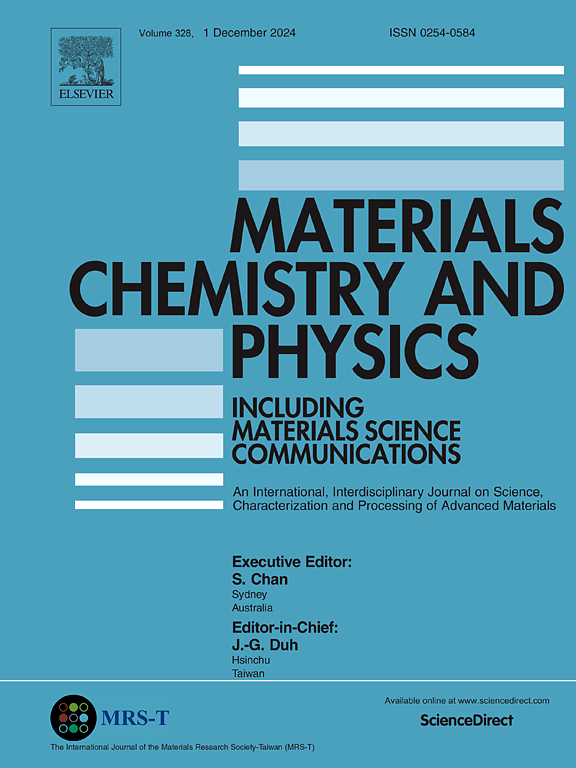Comparative study of pure and chromium-doped nickel oxide nanoparticles synthesized by combustion synthesis for optoelectronic applications
IF 4.3
3区 材料科学
Q2 MATERIALS SCIENCE, MULTIDISCIPLINARY
引用次数: 0
Abstract
In the present research work, the incorporation of Chromium (Cr) doped nickel oxide (NiO) nanoparticles (NPs) were synthesized using the flash combustion process. The impact of Cr-doped NiO (Cr:NiO) NPs on the structural, optical, and dielectric properties was investigated in the research work. X-ray Diffraction (XRD) and FT-Raman (Fourier transform Raman) were also used to determine the phase of Cr: NiO NPs. The crystallite size decrease from 26.2 to 8.5 nm as the doping Cr concentration increased from 0.0 wt.% Cr to 5.0 wt.% Cr. The values of crystallite size and lattice strain were observed to vary with the changing concentrations of Cr: NiO nanoparticles (NPs), respectively. Scanning electron microscopy (FSEM) images revealed that Cr: NiO NPs have spherical shape particles of the prepared NPs. Diffuse reflectance spectroscopy (DRS) was employed to measure the optical band gaps of the prepared NPs using the Kubelka-Munk (K-M) function. The optical energy gaps for Cr:NiO decreased from 3.47 eV to 2.86 eV with an increase in the doping concentration of Cr in NiO. The dielectric properties have been investigated by incorporating Cr into the NiO lattice structure. The highest dielectric constant was observed for 7.5 wt% Cr loaded NiO NPs, which is almost two times that of pure NiO. The reduced crystallite size, enhanced band gap, and dielectric properties indicate the significance of the synthesized NPs in optoelectronic devices.
求助全文
约1分钟内获得全文
求助全文
来源期刊

Materials Chemistry and Physics
工程技术-材料科学:综合
CiteScore
8.70
自引率
4.30%
发文量
1515
审稿时长
69 days
期刊介绍:
Materials Chemistry and Physics is devoted to short communications, full-length research papers and feature articles on interrelationships among structure, properties, processing and performance of materials. The Editors welcome manuscripts on thin films, surface and interface science, materials degradation and reliability, metallurgy, semiconductors and optoelectronic materials, fine ceramics, magnetics, superconductors, specialty polymers, nano-materials and composite materials.
 求助内容:
求助内容: 应助结果提醒方式:
应助结果提醒方式:


